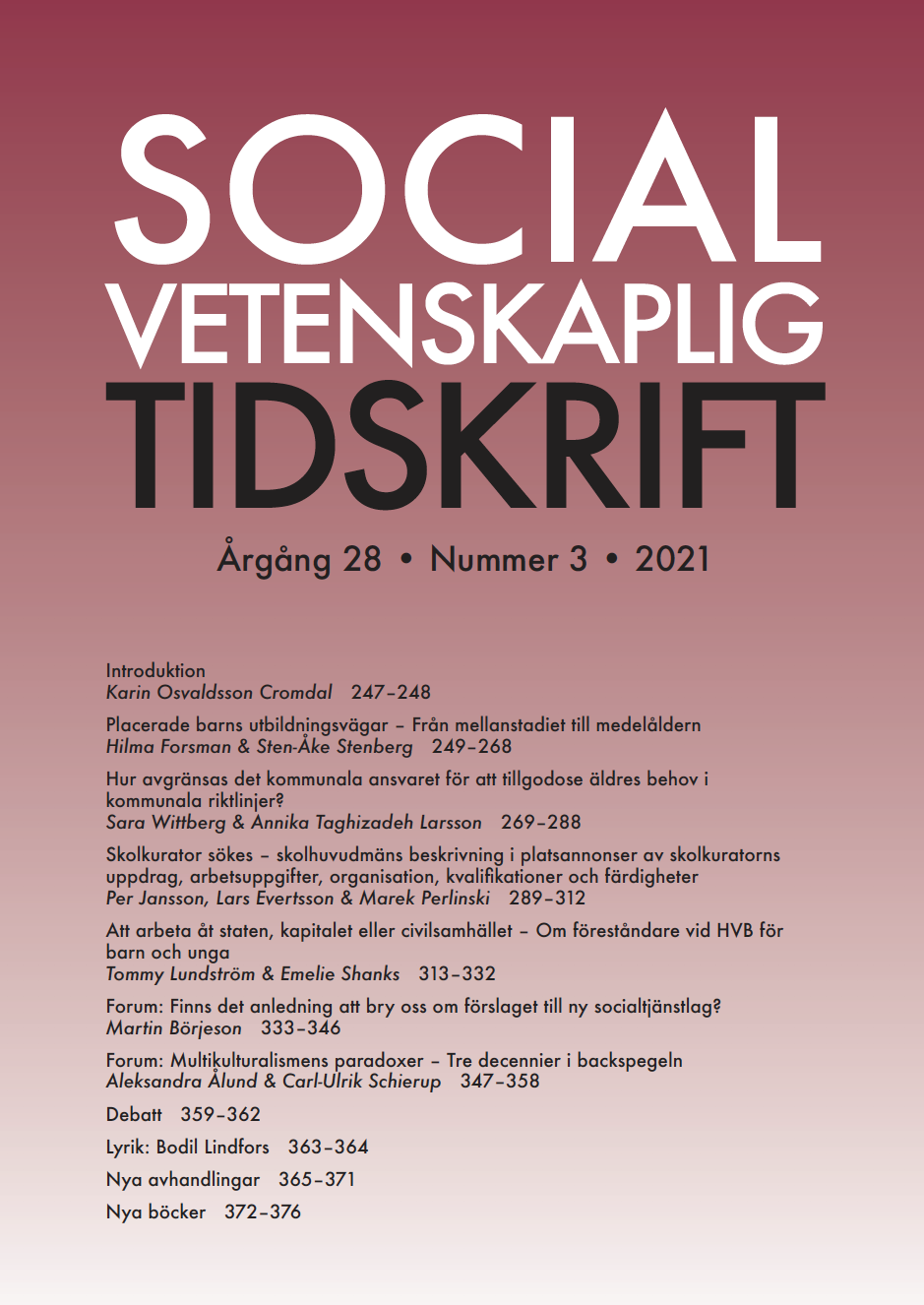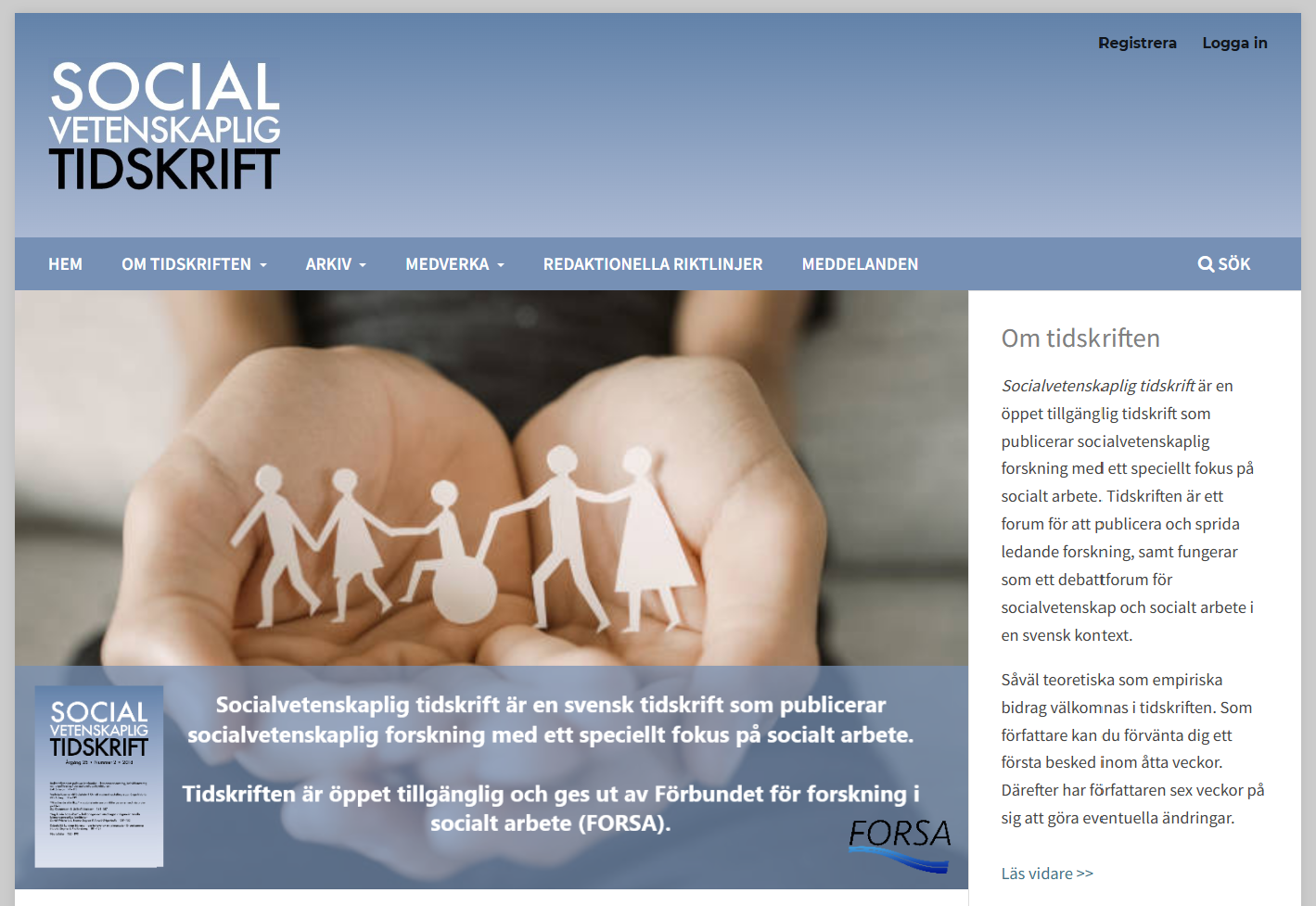Placerade barns utbildningsvägar
Från mellanstadiet till medelåldern
DOI:
https://doi.org/10.3384/SVT.2021.28.3.4261Abstract
Såväl svensk som internationell forskning visar att barn som placerats i samhällsvård har sämre skolresultat än andra barn. Däremot är kunskapen om hur deras utbildningskarriärer ser ut över en längre tid begränsad. Med hjälp av en femtioårig uppföljning av en kohort bestående av drygt 12 000 personer födda 1953, av vilka nästan 8 procent varit placerade före 13 års ålder, har vi följt deras utbildningsvägar över nästan hela livsförloppet. Analyserna fokuserade på hur de placerade barnens utbildningsambitioner, prestationer och val från årskurs 6 och framåt skilde sig från barn som haft barnavårdskontakt utan att placeras respektive barn utan barnavårdskontakt. Resultaten visade att de placerade barnen genomgående presterat sämre och gjort mindre ambitiösa utbildningsval än barnen utan barnavårdskontakt. Däremot var de placerade barnens utbildning lik och i vissa fall till och med bättre än utbildningen för de som haft barnavårdskontakt. Våra resultat visade också att möjligheterna att återuppta studier i vuxen ålder tycks ha spelat en viktig roll för alla barn, inte minst de placerade barnen.
Downloads
Publicerad
Referera så här
Nummer
Sektion
Licens
Copyright (c) 2022 Hilma Forsman, Sten-Åke Stenberg

Det här verket är licensierat under en Creative Commons Erkännande 4.0 Internationell-licens.
Allt material i Socialvetenskaplig tidskrift publiceras sedan 2022 (Vol 28 Nr 2) med omedelbar öppen tillgång (open access), under Creative Commons-licensen CC BY 4.0. Upphovsrätten till innehållet tillhör respektive författare.
Allt innehåll i tidskriften är fritt tillgängligt utan kostnad och får fritt läsas, laddas ned, kopieras, delas, skrivas ut och länkas. När innehållet används måste författare, källa och licens anges. Författaren kan fritt göra sin publicerade text tillgänglig på institutionella och internetbaserade arkiv, exempelvis sitt lärosätes digitala arkiv eller andra tjänster för detta.
Inga publiceringsavgifter tas ut vid publicering i Socialvetenskaplig tidskrift.


